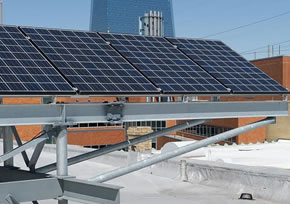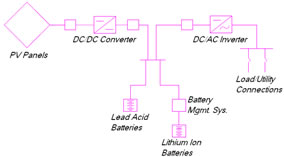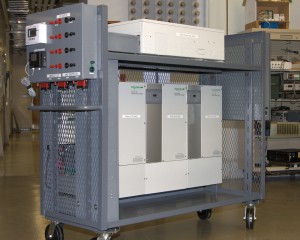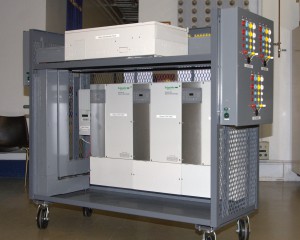Renewable Energy Systems
Electric power networks deliver the energy that drives modern society. Historically, these systems are represented by three distinct components: generation, transmission and distribution. Electric generating stations are traditionally centralized facilities, which convert mechanical energy to electrical energy. The greatest percentage of electrical generation throughout the world comes from the combustion of fossil fuels and nuclear fission, both of which are non-renewable forms of energy.
There has been a strong emphasis in recent years to increase the amount of renewable sources, such as solar, wind, hydro, and biomass. Reasons include a renewed interest in climate change as well as the desire to move away from centralized generating stations.
Lab Description
The Renewable Source Control Center (RSCC) is a part of the Interconnected Power Systems Laboratory (IPSL) dedicated to the study of renewable energy systems. This system has been designed to study the unique attributes of solar and battery systems and to integrate and control renewables in a small electric power system.
The main features of the RSCC include a solar electrical feed with battery storage which can be connected into the IPSL network. This provides a practical learning experience for students as they research how to analyze three-phase power system networks. The RSCC also provides modern tools that are available to energy management system (EMS) operators.
24 Volt Battery System
The 24V portion of RSCC currently consists of the following components:
• 1.6 kW Solar Panel
• 24V Lead Acid Battery (8.4 kWh)
• 24V Lithium Ion Battery (4 kWh)
• Grid-Tie DC/AC Inverter (3.5kW)
• DC/DC Converter (Charge Controller) (1.8kW)
The basic layout of the system is shown in the figures below.
This layout is flexible enough to allow for multiple configurations and experiments. Example configurations include:
• PV/Battery system operating on-grid or off-grid
• System operation with different battery types (Li-Ion vs Lead Acid)
48 Volt Battery System
The 48V portion of the RSCC currently consists of the following components:
• 48V Lithium Ion Battery (8 kWh)
• Three-Phase DC/AC Inverter (6kW each)
• DC/DC Converter (Charge Controller) (9kW)
The layout of the systems matches that of the 24V setup and allows for the addition of the PV input if desired. The pictures below display equipment being used in the lab for the setup.
Experiments
The RSCC is utilized as a platform for researching Smart Grid Technologies and renewable system integration. Through a laptop graphical user interface (GUI), the operation of the solar panels and batteries can be monitored and controlled. Via the IPSL network, the RSCC setup allows for experiments involving multiple bus configurations and load levels fed by renewable and non-renewable sources.
The GUI within the RSCC allows for very detailed observation of how the solar panels and batteries respond within a power system. Also, specific scenarios can be replicated via automatic control of the RSCC, such as intermittent loss of solar generation or a variable load schedule.
Generalized output waveforms of the RSCC.






